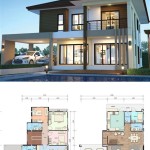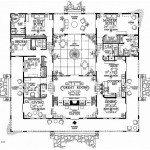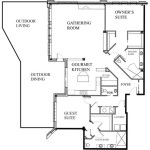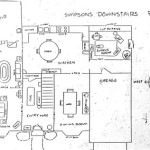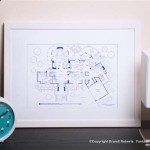How to Create Floor Plans for a House
Creating a floor plan is a crucial step in any home construction or renovation project. It serves as a visual representation of the building's layout, displaying the size and arrangement of rooms, walls, doors, windows, and other essential features. A well-designed floor plan is essential for effective communication between architects, contractors, and homeowners, ensuring that the final constructed space aligns with the intended design and functional requirements.
The process of creating a floor plan can range from simple hand-drawn sketches to intricate computer-aided designs. The chosen method often depends on the complexity of the project, the level of detail required, and the individual's skill level. Regardless of the chosen method, understanding the fundamental principles of floor plan design is paramount to achieving a successful outcome. This article will provide a comprehensive guide on how to create floor plans for a house, covering essential steps, tools, and considerations.
Understanding the Purpose and Importance of a Floor Plan
A floor plan acts as a blueprint, guiding the entire construction or renovation process. It allows for the visualization of the space before any physical work commences, enabling modifications and adjustments to be made early on, minimizing costly errors later in the project. This initial planning phase is critical for optimizing space utilization and ensuring that the layout aligns with the homeowner's lifestyle and needs.
Beyond its visualization capabilities, a floor plan provides a documented record of the design, facilitating communication between various stakeholders. Architects use it to convey their design intent, contractors rely on it for accurate construction, and homeowners can reference it for future renovations or modifications. A well-documented floor plan also aids in obtaining necessary building permits and approvals.
Furthermore, a detailed floor plan can be instrumental in determining material quantities and cost estimations. By accurately depicting the dimensions of the rooms and the placement of features, it allows for precise calculation of flooring, wall coverings, paint, and other materials required for the project. This helps in budgeting and preventing unnecessary material waste.
Steps to Creating a Floor Plan
Creating a floor plan involves a series of steps that progressively refine the design from a conceptual idea to a detailed representation. These steps include gathering information, choosing a planning method, sketching the existing structure (if applicable), defining room layouts, adding details, and finalizing the plan for construction or renovation.
Gathering Information and Defining Requirements: This initial step involves collecting all relevant information about the project. This includes the overall dimensions of the property, the desired number of rooms, the intended function of each room, and any specific design requirements or preferences. For existing structures, accurate measurements of the current space are crucial. This can be achieved using measuring tapes, laser distance measurers, or even digital measuring apps.
Consider the homeowner's lifestyle and needs when defining room layouts. For example, a family with young children might prioritize a large, open-plan living area, while a professional working from home might require a dedicated office space. Accessibility considerations, such as wider doorways and ramps, should also be factored in for residents with mobility issues.
Choosing a Planning Method: There are several methods for creating floor plans, ranging from traditional hand-drawing techniques to advanced computer-aided design (CAD) software. Hand-drawing is a simple method suitable for small projects or preliminary sketches. Graph paper can be used to ensure accurate proportions. CAD software offers a more precise and efficient method for creating detailed floor plans. Several user-friendly CAD programs are available, catering to different skill levels and budgets.
Online floor plan tools and mobile apps are another option, offering intuitive interfaces and pre-designed templates that can be customized to fit specific needs. These tools are often suitable for simple projects and quick visualizations. The choice of method depends on the complexity of the project, the required level of detail, and the individual's preference and technical skills.
Sketching the Existing Structure (If Applicable): For renovation projects, an accurate sketch of the existing structure is essential. This involves measuring and drawing the outline of the building, including walls, doors, windows, stairs, and any other existing features. The sketch should be drawn to scale, using a consistent unit of measurement (e.g., inches or centimeters). The accuracy of this sketch is crucial, as it forms the basis for all subsequent design decisions.
When sketching the existing structure, pay close attention to details such as the location of electrical outlets, plumbing fixtures, and heating and cooling vents. These elements may influence the placement of new walls, fixtures, and appliances. Taking photographs of the existing space can also be helpful for referencing details and ensuring accuracy.
Defining Room Layouts: This step involves arranging the rooms within the overall building footprint. Consider the relationships between different rooms and how people will move through the space. For example, the kitchen should ideally be located near the dining area, and the bedrooms should be separated from the main living areas for privacy. Natural light and ventilation should also be considered when positioning rooms. Southern-facing windows can provide ample sunlight, while strategically placed windows can facilitate cross-ventilation.
Think about the furniture and fixtures that will be placed in each room. Ensure that there is sufficient space for comfortable movement and that the layout accommodates the intended use of the room. Consider traffic flow patterns and avoid creating bottlenecks. The layout should be functional and aesthetically pleasing, creating a comfortable and inviting living environment.
Adding Details: Once the basic room layouts are defined, it is time to add details such as doors, windows, stairs, fixtures, and appliances. Doors should be drawn with the correct swing direction, ensuring that they do not obstruct pathways or create awkward angles. Windows should be drawn to scale, indicating their size and location. Stairs should be drawn with the correct rise and run dimensions, ensuring that they comply with building codes.
Fixtures such as sinks, toilets, bathtubs, and showers should be accurately represented, along with their plumbing connections. Appliances such as refrigerators, stoves, and dishwashers should also be included, with their dimensions and electrical connections indicated. Consider the placement of electrical outlets, light fixtures, and switches. These details are essential for accurate construction and ensuring that the finished space is functional and comfortable.
Finalizing the Plan: After all the details have been added, review the plan carefully to ensure that it is accurate, complete, and meets all the requirements. Check for any errors or omissions, and make any necessary corrections. If the plan was created using CAD software, consider generating multiple views, such as 3D renderings or elevations, to provide a more comprehensive understanding of the design.
The final plan should be clearly labeled with all dimensions, room names, and other relevant information. It should also include a legend that explains any symbols or abbreviations used. The finalized plan should be printed or saved in a digital format that can be easily shared with architects, contractors, and other stakeholders.
Key Considerations for Effective Floor Plan Design
Effective floor plan design involves considering several key factors to ensure that the final space is functional, aesthetically pleasing, and meets the needs of the occupants. These factors include space planning, traffic flow, natural light and ventilation, accessibility, and adherence to building codes.
Space Planning: Space planning is the art of arranging rooms and furniture to maximize functionality and comfort. It involves considering the intended use of each room, the number of occupants, and the furniture and fixtures that will be placed in the space. An effective space plan optimizes the flow of movement, minimizes wasted space, and creates a harmonious balance between different areas of the home.
Consider the size and shape of each room when planning the layout. Large, open-plan areas can be ideal for entertaining and family gatherings, while smaller, more intimate spaces can provide privacy and relaxation. Use furniture placement to define different zones within a room and create a sense of visual interest.
Traffic Flow: Traffic flow refers to the way people move through the space. An efficient traffic flow minimizes congestion, avoids bottlenecks, and ensures that people can move easily between different areas of the home. Consider the pathways between rooms and avoid placing furniture or fixtures that obstruct movement. Create clear and direct routes between frequently used areas, such as the kitchen and the dining room. The floor plan should facilitate a natural and intuitive flow of movement, enhancing the overall usability of the space.
Natural Light and Ventilation: Natural light and ventilation are essential for creating a healthy and comfortable living environment. Maximize natural light by strategically placing windows and skylights. Southern-facing windows can provide ample sunlight throughout the day, while eastern-facing windows can capture the morning sun. Consider the orientation of the building and the surrounding landscape when positioning windows. Provide adequate ventilation by ensuring that windows can be opened and that there is cross-ventilation between different areas of the home.
Accessibility: Accessibility considerations are crucial for ensuring that the home is usable and comfortable for all occupants, including those with mobility issues. Wider doorways and hallways, ramps, and accessible bathrooms and kitchens are essential features for creating an inclusive living environment. Consider the needs of elderly residents or those with disabilities when designing the floor plan. Plan for level thresholds, grab bars in bathrooms, and adjustable-height countertops in the kitchen. Incorporating accessibility features not only enhances the usability of the home but also increases its value and longevity.
Adherence to Building Codes: Building codes are regulations that govern the design and construction of buildings. They are designed to ensure the safety and well-being of occupants and the public. Adherence to building codes is essential for obtaining necessary permits and approvals. Consult with local building officials or a qualified architect to ensure that the floor plan complies with all applicable codes and regulations. This includes requirements for fire safety, structural integrity, plumbing, electrical systems, and accessibility.

Floor Plan Creator And Designer Free Easy App

Blender For Noobs 10 How To Create A Simple Floorplan In

Easy To Build Houses And Floor Plans Houseplans Blog Com

Floor Plans Learn How To Design And Plan

Easy To Build Houses And Floor Plans Houseplans Blog Com

Draw Floor Plans With The Roomsketcher App

Easy Home Building Floor Plan Cad Pro

Make Your Own Blueprint How To Draw Floor Plans

House Floor Plans Your Best Guide To Home Layout Ideas

Floor Plans Learn How To Design And Plan

